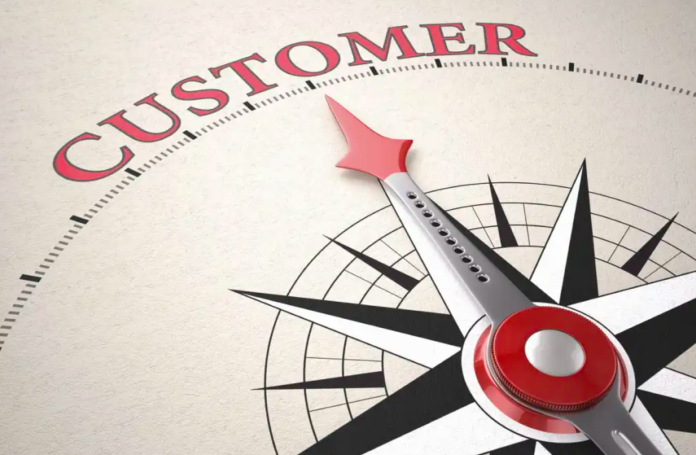As lottery operators move to expand their product offerings, Lottery Daily’s Jari Vähänen identifies that too many businesses are stuck on a legacy approaches when evaluating their product offerings and customer impacts.
Gambling companies, including lotteries, have traditionally been built based on their specific product groups. The reason for this is the gambling companies’ origins and background, which usually focuses on a particular product area.

As such, lotteries began with the sale of lottery draws, casinos with their games, and horse and sports betting companies with wagering markets. However, over the years, most operators have diversified their operations to other areas to enlarge their business units – hence a product-based organisation almost automatically leads to product-based decision-making, which does not produce optimal results for gambling operators.
We often hear gambling companies announce that they are utilising a ‘customer-based strategy’. In my previous company, Veikkaus, we launched a customer-based business strategy almost twenty years ago, in 2004 – in retrospect, it wasn’t a real customer-oriented strategy, even though we were very serious about it.
The problem then was the inability to adapt to a new way of thinking. Our internal approach emphasised that customer orientation carried a lot of weight, but in reality, the measurement and the control of operations were ultimately still based on the products.
As a business consultant, I have observed several companies’ operations from the sidelines for a few years now. Unfortunately, many seem to be in the same situation as Veikkaus was decades ago. There is a lot of talk about customers, and the aim is to use customer data in all decision-making processes. Yet, in reality, they remain quite far from developing their desired real customer-oriented solutions.
It’s easy to notice, for example, by reading annual reports of lottery operators, in which the reporting continues to be based on sales and GGR of individual products.
When applied, product-based thinking and management can lead to partial optimisation, which naturally does not produce optimal results. Worse still goals can be based on product areas or even individual products that generate wrong business decisions that can go unnoticed.
For example, many gambling companies end their customer relationships with winning sports bettors, even though, in some cases, those same customers lose money in other product areas. A customer can be productive for the business. Still, for the manager responsible for betting, the same customer can produce a loss, and be defined as a risk regardless of his overall qualities.
These types of negative decisions will cause a decrease in income for the entire company, yet it appears that no one cares about it due to the absence of total customership.
The dominance of online gambling and its compliance duties, should see operators have sufficient customer data; thus, a better understanding of customers should be achievable. In addition, several gambling companies have also acquired the necessary resources for processing customer data, but this is not enough if there is no understanding involved in processing customer data.
Customer planning must start from a business case based on the overall data feedback, on which a practical objective and goal setting must be assigned. Of importance, employees do well in what they are rewarded for. Because of this, partial optimisation is still far too common.
With the help of management decisions based on customer data, results should outperform standard business practices and improve customer care. These improved outcomes are based on customer-specific offerings, which increase sales and improve customer satisfaction.
In a well-functioning model, the customer does not feel he is faced with sales measures but receives better personal service. With the help of customer data, it is possible to identify players suffering from gambling problems and those who seem to be at risk of getting into harms –
and of course, sales and marketing measures should never be aimed at these problematic customer groups.
Lotteries’ are usually based on lotto games and scratch cards, both of which have a high rate of return. For a long time, the payout percentages of lotto games were around 40% and they are still around 50-60%.
In a product-based business model, this can lead to the idea that players of other product groups are recognised as worse customers since payout rates of sports and casino games are now more than 90%
However, this kind of thinking causes lotteries to make wrong business decisions, which should be eliminated using customer data.
Lotteries should use a model based on customer data, in which customers are separated into groups according to which product they play the most.
Customer segmentation is therefore based on the primary game product that could be considered the main reason to be a customer. Based on such a straightforward division, it is easy to notice the shortcomings and errors of traditional product-oriented thinking.
The information I have received from lotteries offering multiple products expresses that the value of customers who mainly play betting is many times higher than those who play lotto games as their primary product.
This dynamic should be accounted for when comparing the importance of lotto games and betting products in traditional product-based thinking. Lottery games generate more money for lotteries than compared to sports games. With this kind of thinking, you can end up with a solution where you don’t invest and develop betting products because they generate just a small profit.
The worst scenario, is that your solution transfers profitable players to your competition… I can’t tell the concrete figures of any lottery, but I dare to give one example because the information is already so old.
Fifteen years ago, Veikkaus ran two large pool-based horse betting products in Finland. At the same time, Fintoto, a company focused on horse betting, wanted those games. The decision-makers wondered why Veikkaus opposed that move, even though Veikkaus’ annual profit from horse betting was around 10 million euros, only about 1% of the company’s profit.
At that time, we already had customer data available. We noticed that the total revenue for Veikkaus from customers who primarily play horse betting was 6–7 times bigger than the money collected from horse betting alone. We were afraid of losing the customers who were valuable to us.
This granular understanding is available to all gambling companies with modern data systems, So use them to develop your overall business as benefits are tangible and long-standing.




























